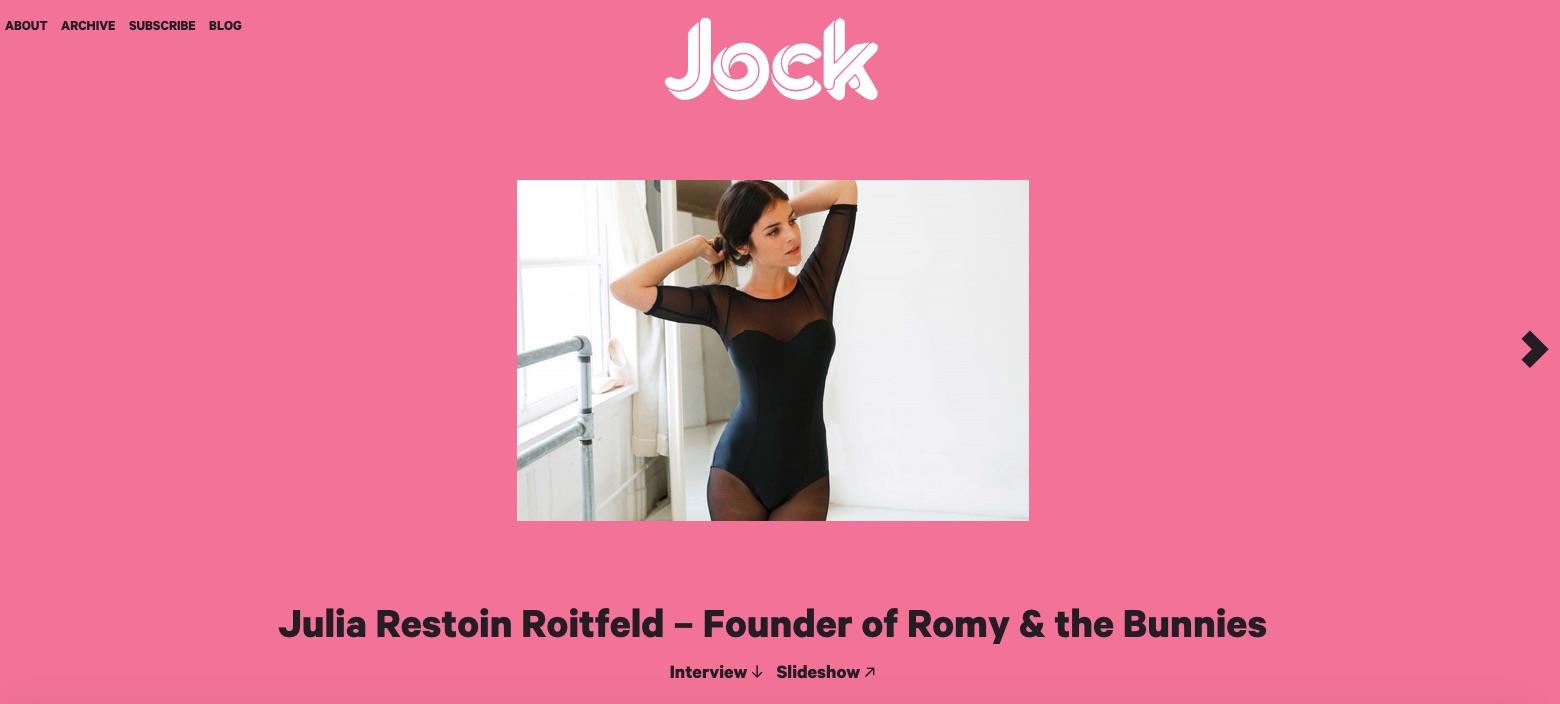The media revolution in the lifestyle market is happening now
Chelsea Marie of Find Yourself Healthy is a NPC Bikini Competitor and full time fitness coach. She says she started FYH to promote her personal brand but has ambitions to grow it. Today, her blog has around 1,000 visitors per month and 8000 followers on social media platforms.
Aimee Cho, a fashion designer, and Stephanie Tran, a freelance creative, started The New Jock a little over a year ago. Jock features long-form interviews with fashion editors and professional athletes about their fitness routines. The website stands out for its beautiful photography and inspiring Instagram account. Cho says in the email: “We felt there was room in the landscape for our voice – with more long form interviews that might not be possible in a traditional media format and visually arresting photography.”

Greatist, a New York-based media startup focusing on healthy living was founded four years ago by Derek Flanzraich. Today the website has more than 10 million users per month, more than two million email subscribers, and two million social media followers. Alexia Brue and Melisse Gelula invested their own money in 2009 to start Well + Good, which today sees two million monthly visitors, 700,000 email subscribers and operates in New York City and Los Angeles. Greatist and Well+Good are Webby Awards 2015 winners in both Lifestyle and Health categories.
As Instagram’s “Explore Posts” and Pinterest’s “Explore now” tools have become more sophisticated, it becomes easier to find new media of interest. Quiana Prince, a 21 year-old dancer from New York, says she mostly uses Instagram to search for training tips and new fruit smoothie ideas but doesn’t have favourite websites she visits regularly. Kelly Arias, 32, is a marathon runner and a kickboxer. She says she is a long-time Runner’s World magazine subscriber and she turns to livestrong.com for dietary advice and exercise regime.
“Half of our traffic come through organic search, and the other half is split evenly between social sources (Pinterest, Instagram, Facebook), email and direct traffic,” says Derek Flanzraich of Greatist. “Our primary platform today is email. The amazing thing about this platform is that readers actively invite you to be a part of their inbox. We take that responsibility and privilege very seriously. Pinterest is huge for us, too” He adds that Greatist started telling stories in a visual way on Pinterest in 2011.
Cho of The New Jock says that they gain new readers more through Instagram than through organic search.
The global wellness industry is a US$3.4tn market, and the Global Wellness Institute projects it will only keep growing. Legacy media are trying to catch up with the demand. According to Alexa rankings, health.com (Hearst), shape.com (Meredith Corp.) and self.com (Condé Nast) are in the global top-50 websites in terms of traffic in the Health category. In October 2015 Rodale Inc. launched its Rodale Wellness website as a part of Rodale Books. Today it has more than 750,000 monthly visitors. “With Rodale Wellness we saw an opportunity to develop a deeper engagement with our readers that could help them either discover or go beyond the messages in the books we are publishing”, says Gail Gonzales, VP/publisher of Rodale Books. “We see ourselves in the same space as Mind Body Green, Well + Good, Greatist”.

But startups don’t think they compete with established media brands. “We are already larger than most of the magazines you mentioned”, says Derek Flanzraich. “We work very closely with legacy media, but we are definitely different. We are digital first, and digital only. We reach a different audience, primarily a millennial focused audience.” Aimee Cho says, “It’s easier for us to be nimble and flexible about how we do things and being able to react to our audience quickly. But that’s because we are small”.
“When it comes to the latest info on health and wellness topics that audience is by nature on the lookout for multiple opinions and voices, so it’s inevitable that they will experiment with new sources for information”, says Gail Gonzales. “I believe there’s room for everyone. As long as trusted brands continue to offer their audience premium content and experiences, they will be able to hold on to and grow their audience.”
So what is different about these new mediums, if anything? “If you are 20-something and 30-something year-olds who are trying to get healthier, we just know you, we are you, we speak your language, we live your life. That laser focus allows us – we hope – to be more relevant for that audience”, summarises Derek Flanzraich.
Greatist turned profitable last year and received $4.5m in funding in January 2016. The New Jock is still small, but eventually plans to monetise via advertising and special projects. Well+ Good launched a redesigned website just a week ago. The amount of small digital-born mediums are growing every day. Right now blogs are not in direct competition with traditional media companies because their core audience is millennials. However, as more and more millennials age and start making money, is this set to change?
More like this
Why should modern media companies look outside news businesses for revenue opportunities?
Yahoo editor on growth and change: “Once you figure it all out, you are dead.”
“The future of innovation is in your backyard,” says NYC Media Lab’s Hendrix








